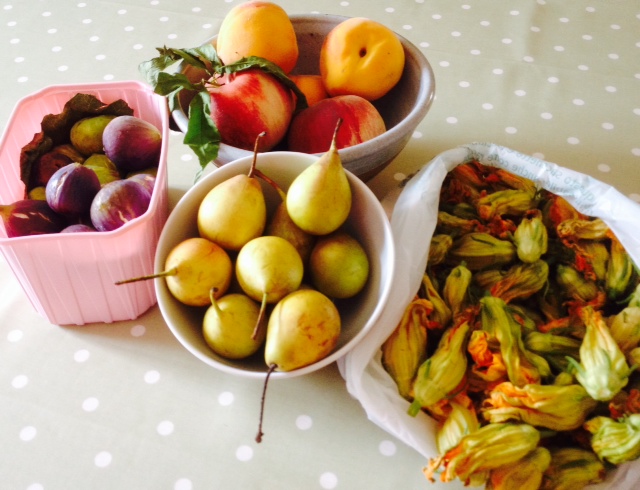 |
| Squash, cabbage and misto brodo |
At its simplest, a 'brodo vegetale' vegetable broth can be made by adding the coarsely chopped 'misto brodo' vegetables and parsley to around 2 litres of water in a large pan or stock pot with salt and pepper. In addition to this you could add any combination of large chunks of tomato, leek, courgette or greens (not the bitter type) if you want to, along with a few peppercorns, a couple of bay leaves and some salt. Leave everything to simmer and bubble away for at least 2 hours then strain, taste and reduce further if you want a stronger stock or flavour.
A very traditional meat-based 'brodo' for cooking tortellini in, for example, would see the addition of chicken bones or a joint of chicken still on the bone (although the carcass from a roasted chicken is great for this!) and a piece of stewing beef or shin of beef on the bone thrown into the stock pot alongside the vegetables. You can ask the butcher for 'carne per fare il brodo' for an appropriate cut! This gives a far richer 'brodo di carne', perfect for the addition of tortellini or ravioli served with a smattering of parmesan cheese. This is a very traditional first course for Italian festive meals at Christmas and New Year!
Other ideas for soups...
Minestrone - chop or cube into small pieces the 'misto brodo' vegetables along with a variety of what you have available at home, eg squash or pumpkin, shredded cabbage or other mild greens, carrots, potatoes, courgettes, tomatoes, french beans, peas. Add all of these to simmering stock of your choice, then leave to cook uncovered for around an hour. Season as required. At this stage you can add small pasta shapes or snapped lengths of spaghetti and let this cook in the soup. You could also add cooked beans (eg borlotti) at this point for a heartier soup. Minestrone is delicious served with a generous dollop of pesto.
Squash or Pumpkin - add lightly sauteed ingredients to stock of your choice, then blend, these are a couple of soup combinations that work well:
- with garlic, mixed herbs, red onion, red lentils
- previously roasted with chili powder or paprika and garlic, add minced ginger to the stock
A great recipe for a herbed squash soup with parmesan croutons from Jamie Oliver is here:
http://www.jamieoliver.com/recipes/vegetables-recipes/superb-squash-soup-with-the-best-parmesan-croutons/#twXYvTPe0pyBo8JQ.97
Cabbage
Another recipe from the Jamie Oliver website, submitted by a contributor, is for a cabbage, cannellini bean and bacon soup (you can use cubed pancetta):
http://www.jamieoliver.com/recipes/member-recipes/recipe-detail/2047/#SwvTxV0Zh54k8iAD.97
For more ideas for cabbage, there are some great ones here including roasted cabbage and a variety of 'slaw' side dishes:
http://www.marthastewart.com/1109578/cabbage-recipes
Cime di Rapa
For a cime di rapa, potato and bean soup:
Boil the trimmed greens (remove stalks so you are left with the leafy and 'broccoli' type parts) for about 10 minutes. In a separate pot, sweat some potatoes with a finely chopped onion until softened, adding garlic if you would like to, then some sliced chilli to taste (or you can leave this out). If you are using frozen or fresh beans, these need to be cooked until they are soft, or you can use tinned cooked beans - cannellini work really well here, using a 400g tin as an idea of quantity. Add the greens and half of the beans to the potatoes with enough stock to cover well. Simmer for 5 minutes and season to taste. Remove from the heat, blend to a smooth soup then add the remaining beans, heating through again if necessary. Serve with a swirl of good extra virgin olive oil and crusty bread.
The recipe for a very hearty sausage and cime di rapa soup is here:
http://www.foodidude.com/foodidudes-kitchen/zuppa-di-broccoli-di-rapa-broccoli-rabe-soup






